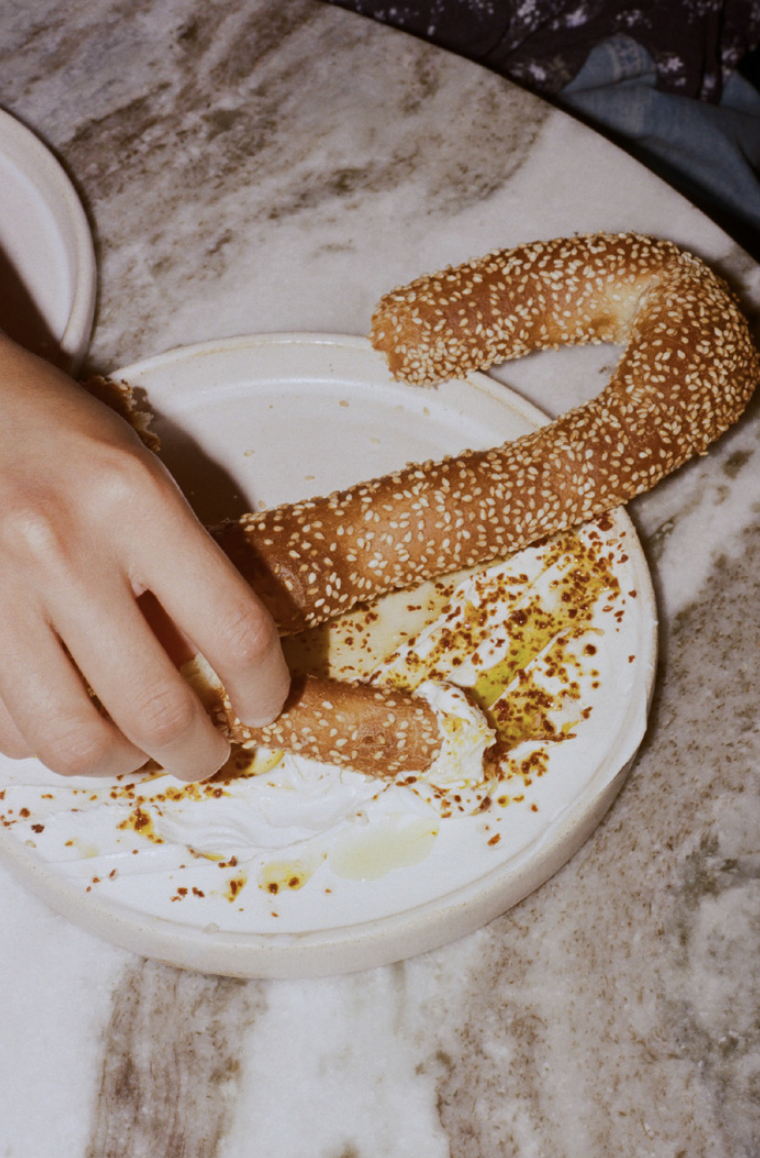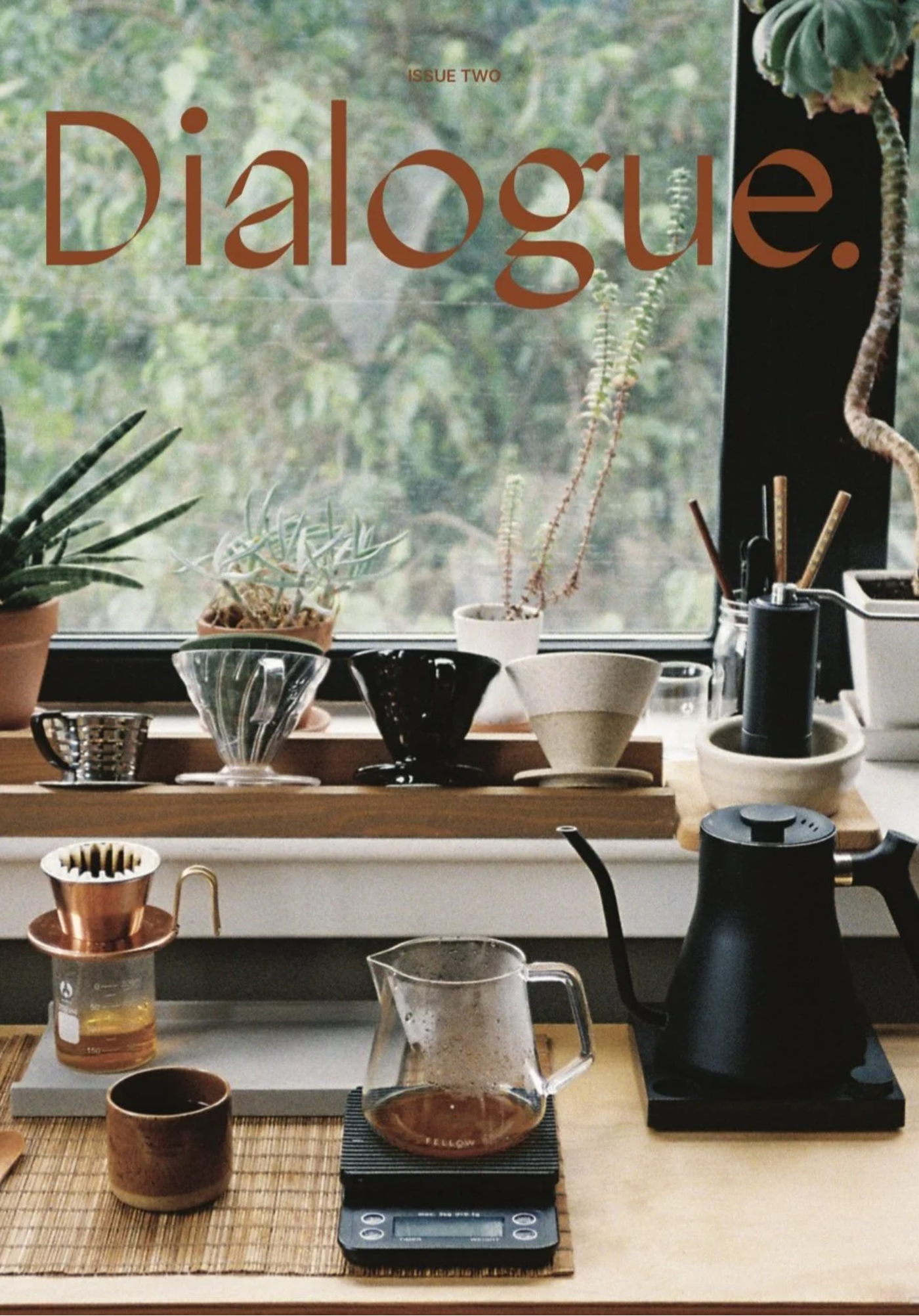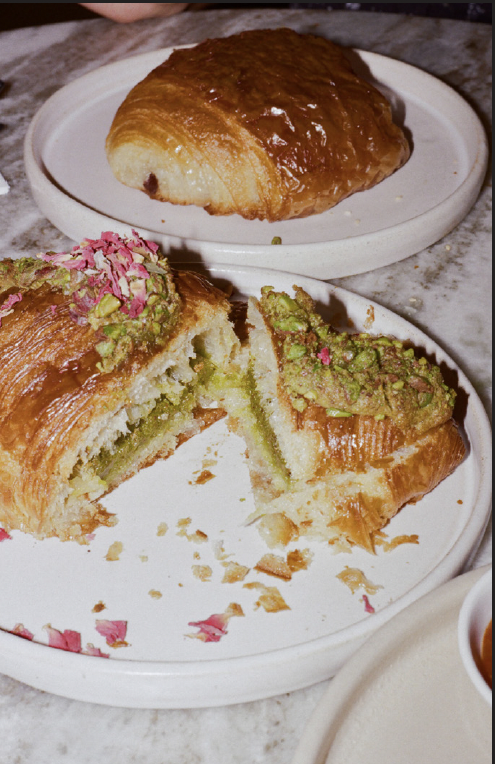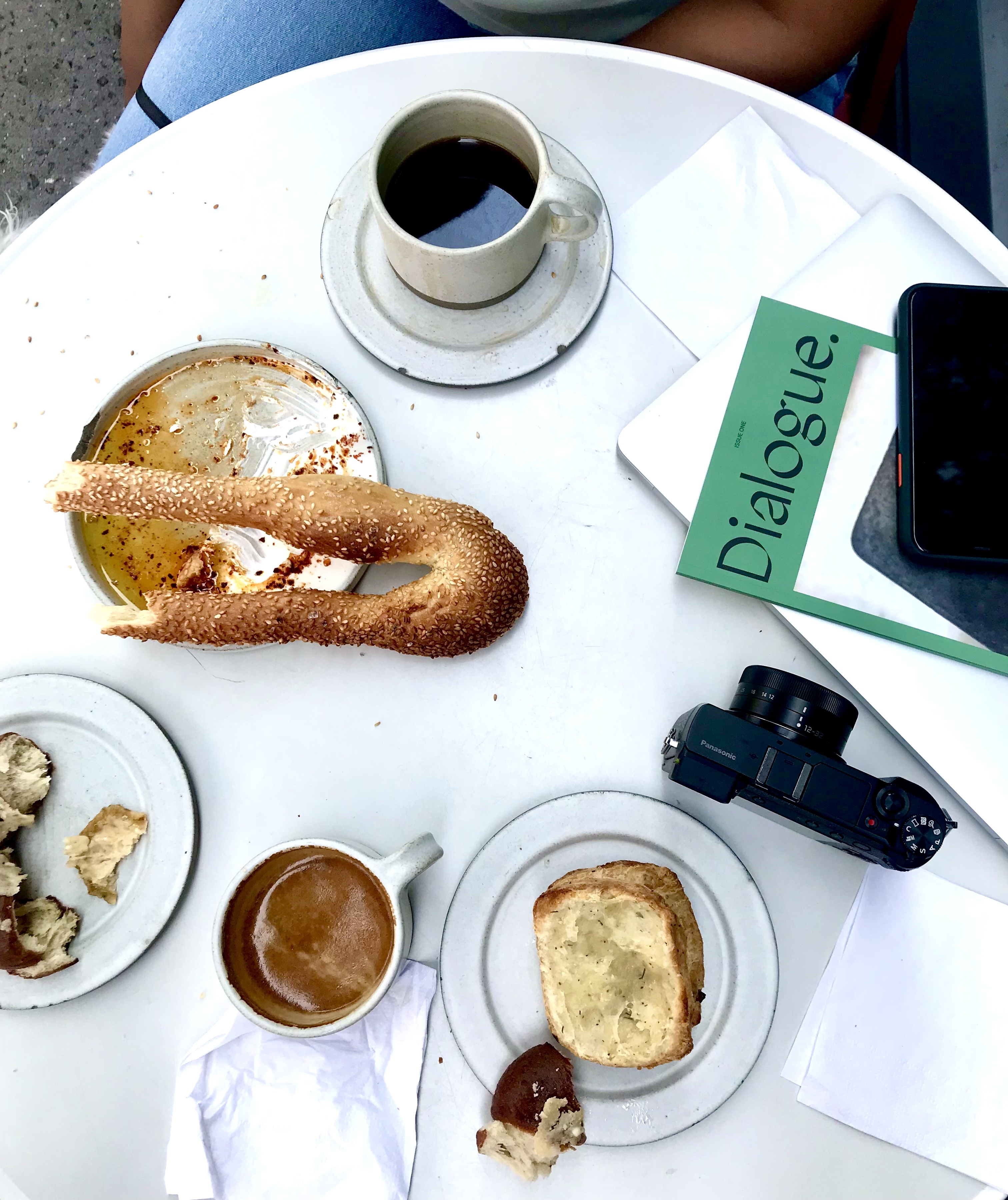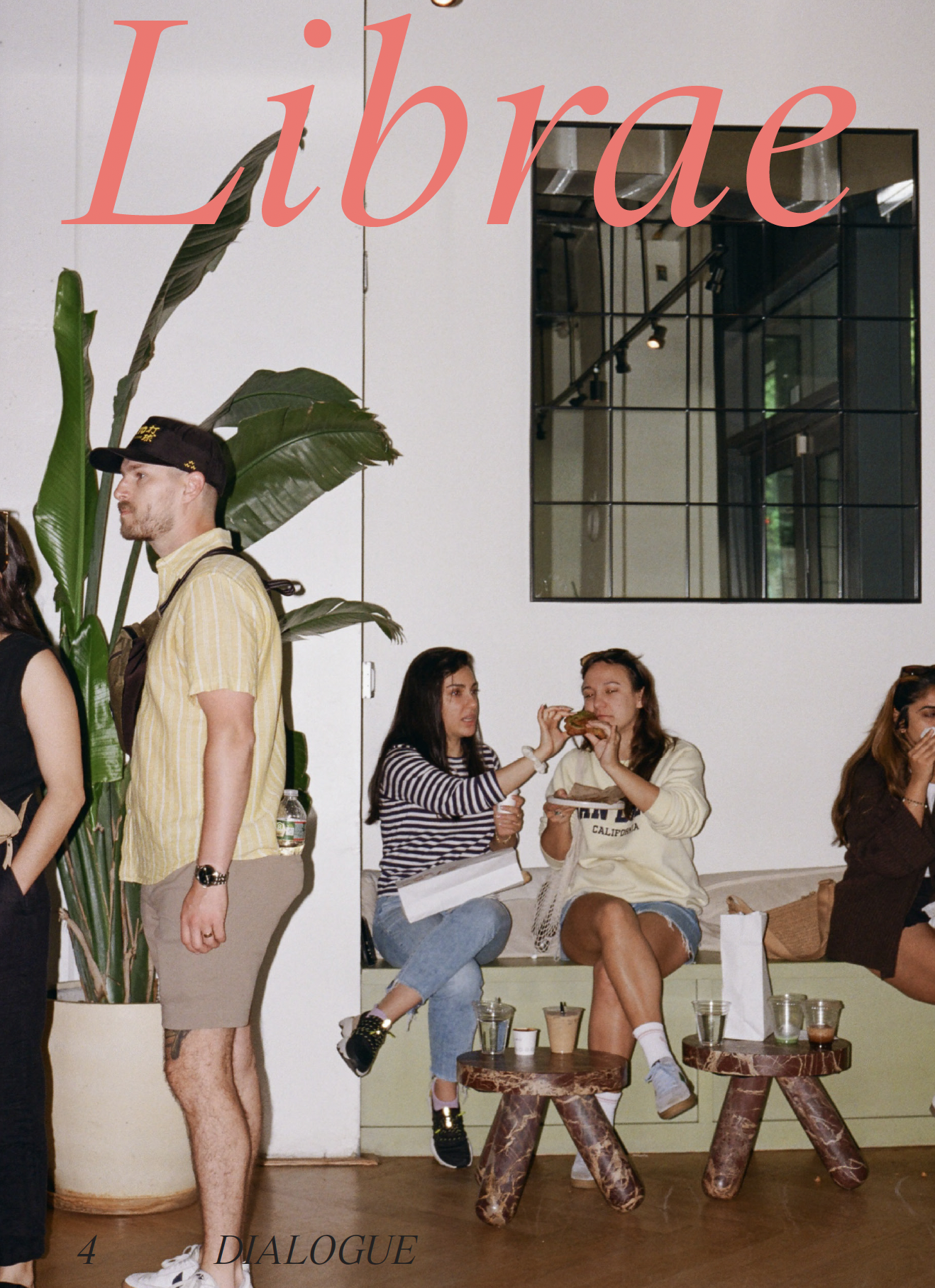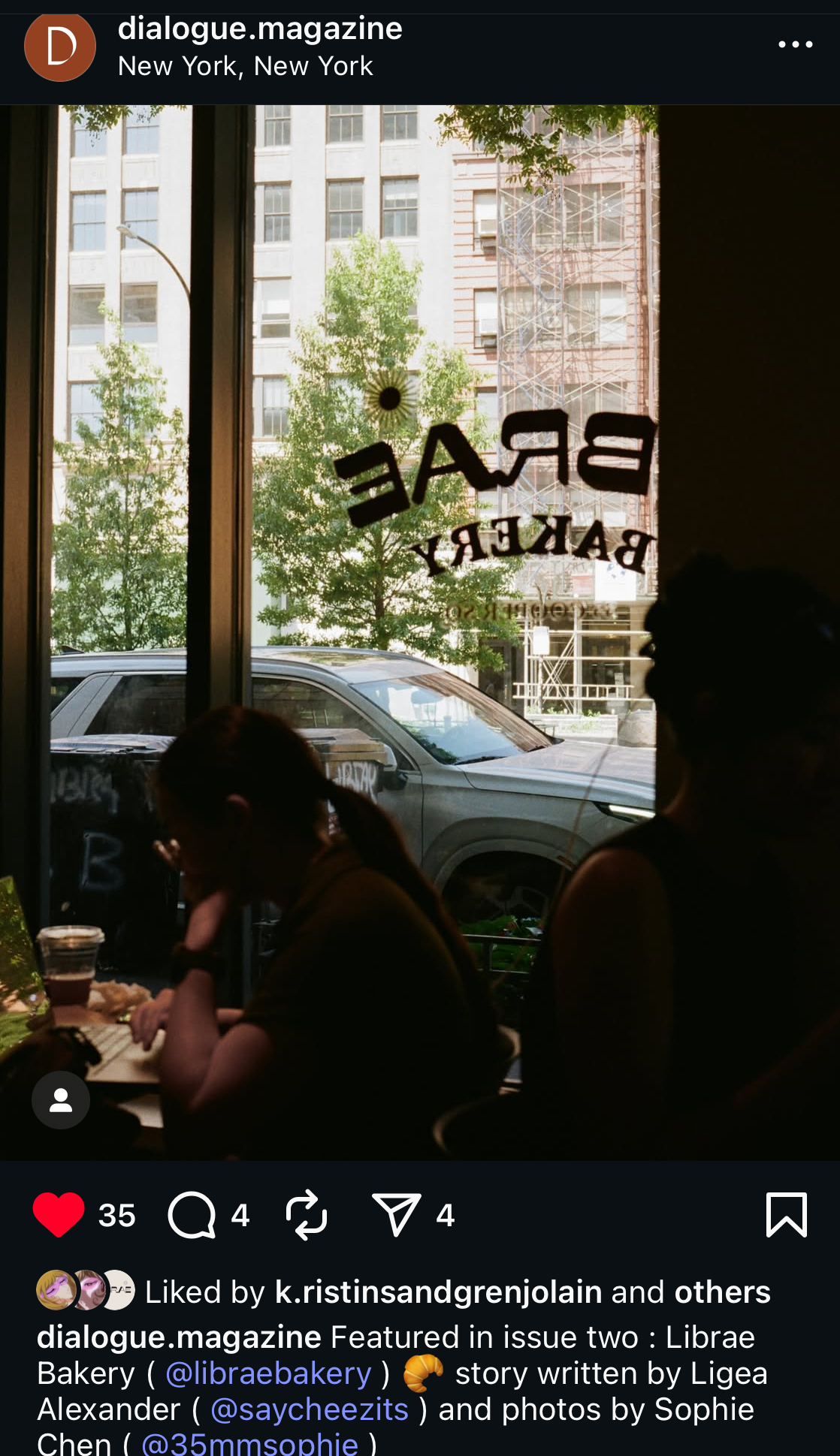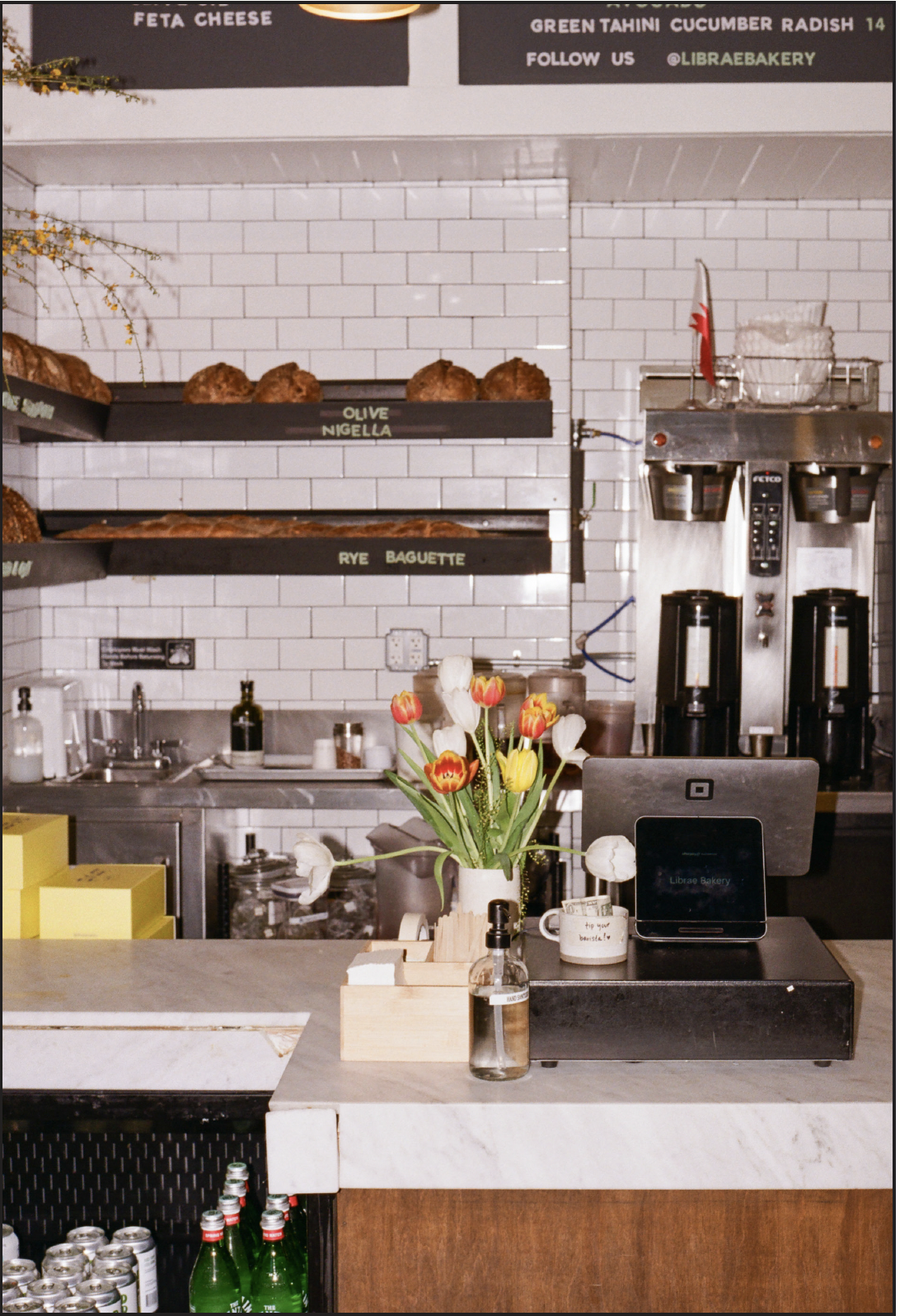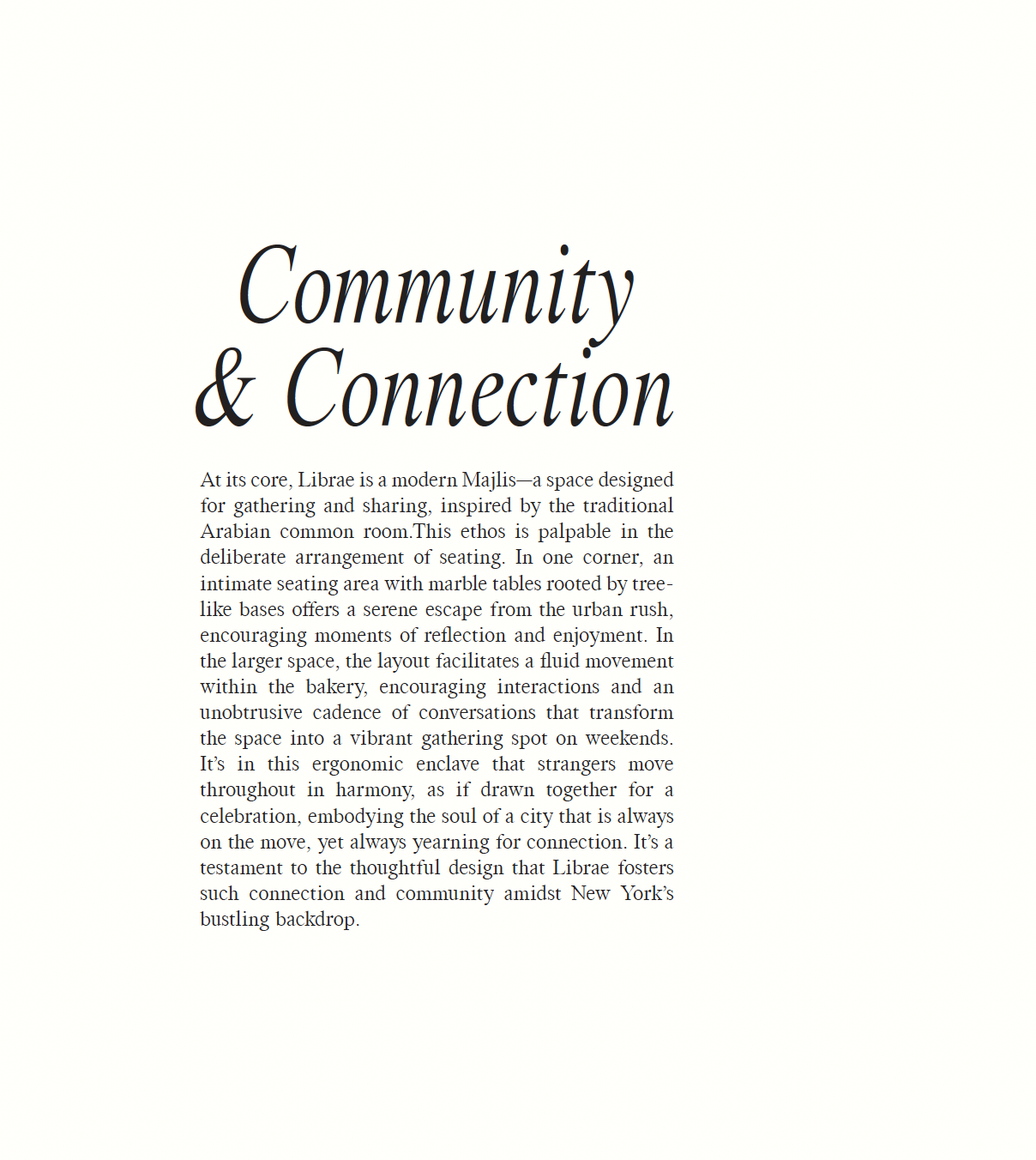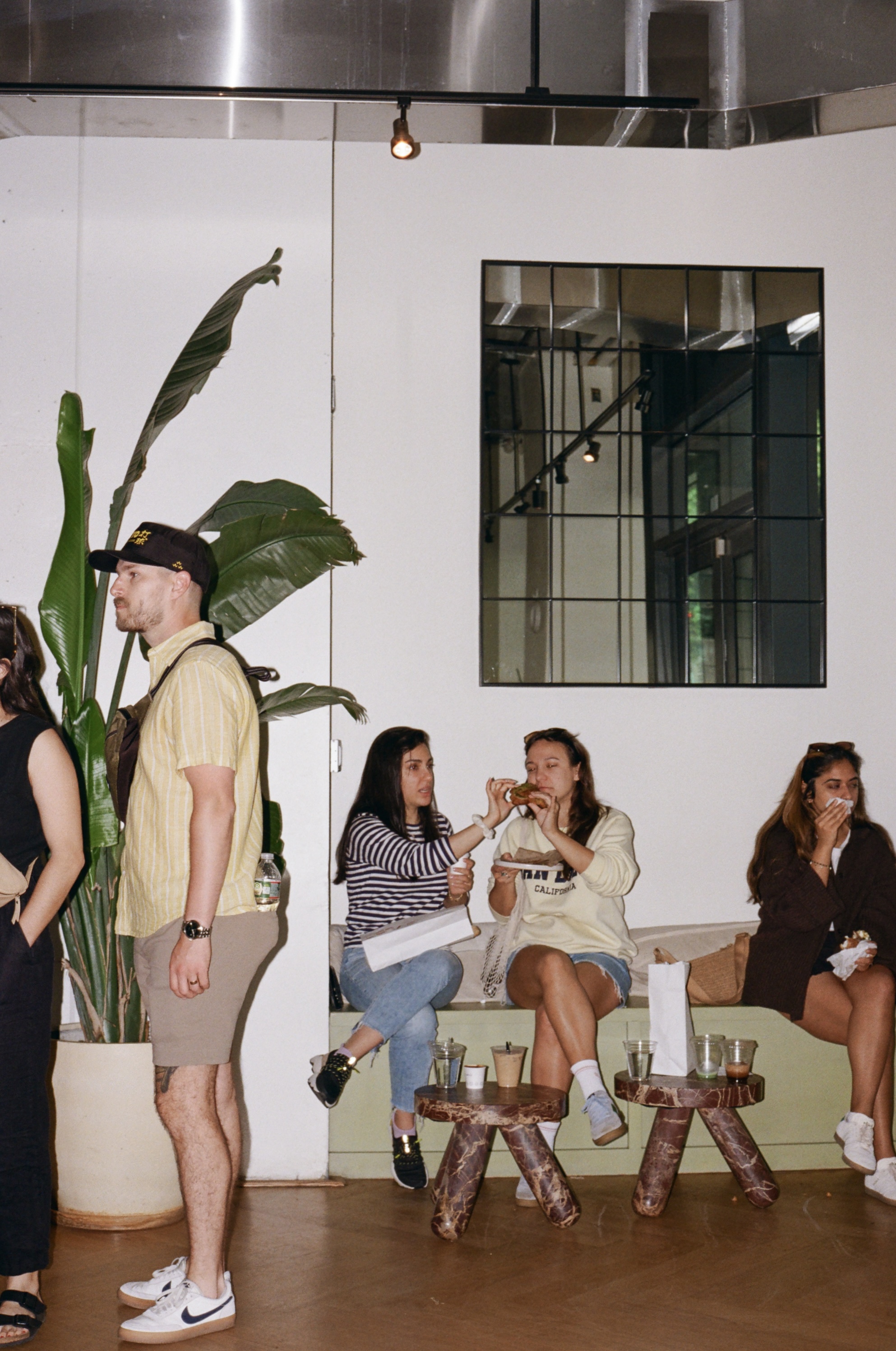Feature article for Dialogue Magazine's print-only second issue, profiling Librae Bakery in New York's Cooper Square. The story highlights how Middle Eastern design, Danish baking traditions, and New York café culture converge to create a modern Majlis.
Visit Dialogue Magazine ↗Why This Story
I pitched Librae Bakery because it represented more than a trending café. It was a story about how architecture, heritage, and food culture intersect in New York City. Librae's design drew from Bahraini traditions while adapting to the rhythms of downtown Manhattan, making it a natural fit for Dialogue Magazine's (a print-only publication) second issue, themed around architecture and coffee. The bakery's open production concept, fusion of Danish and Middle Eastern baking, and its role as a community hub offered a chance to write a feature that spoke to both design and cultural storytelling.
But beyond its cultural and architectural significance (and it's alignment with the issue's theme), Librae stood out to me because it was the first Bahraini café in New York City. To others that detail might seem small, but I had my own connection. I first learned about Bahrain as a child, watching Trinidad and Tobago beat them to qualify for the 2006 World Cup. Not exactly the best introduction to the country from a Bahraini perspective, but it sparked my curiosity and I found myself reading more about the country afterwards. So when I learned about Librae, the story felt personal. Covering Librae wasn't just about thematic alignment with the issue; it felt like a story I was already connected to.
My Approach
I structured the feature with a classic magazine arc. The lede immersed readers in the sensory experience of entering Librae like the queue at the door, the rhythm of movement between bakery, barista, and pastry counter, and the open glass view into production, to recreate the orchestral feel that I experienced in the space.
The nut graf established Librae as a modern Majlis (an Arabic term for sitting room), emphasizing the deliberate seating design and the transparency of the open bakery, which bridged traditional Danish techniques with Bahraini culture.
The arc wove together these observations with interview insights, highlighting architecture, sustainability, and coffee culture.
My goal was to create a piece that stood apart from earlier coverage: not just reporting on Librae's popularity, but showing how its fusion of design and practice exemplified the issue's theme of architecture and coffee.
Execution
I conducted a virtual interview with owner Dona Murad, who shared the backstory of launching Librae with her family and her broader work with Hopscotch and Grind Roastery. Her reflections set the tone for the piece, motivating me to capture the café's story with honesty and depth. To complement her perspective, I returned to Librae for additional on-site reporting, pushing myself beyond my comfort zone by exploring the full menu -from signature pastries to dishes like the Loomi sandwich- to better understand the bakery's range. This combination of interview insights and firsthand observation allowed me to craft a narrative that blended personal detail, cultural context, and sensory immersion.
Design and Production
The visual presentation was led by Dialogue Magazine's founder and editor-in-chief, Kristin Sandgren-Jolain, together with the magazine's graphic designer. They paired Sophie Chen's photography with the narrative arc of my feature, aligning imagery with key moments, from architectural details to specific pastry mentions so that text and visuals reinforced one another. Their layout decisions elevated the story, ensuring that the design mirrored the balance of immersion and clarity I aimed for in the writing.
Impact
The feature appeared in the print-only second issue of Dialogue Magazine. After publication, readers shared how the piece drew them toward Librae, with several saying they felt compelled to visit specifically to experience the seating I described. What struck me most was hearing from people who aren't regular coffee drinkers or part of the bakery café scene; even they felt pulled in by the way the narrative captured the space and its atmosphere. The magazine also spotlighted the story in their announcement and promotion of Issue Two on Instagram, which helped extend its visibility beyond the print readership and positioned the article as one of the features anchoring that issue.
